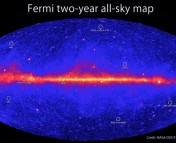 If you’re a long-time astrobites reader with interests that extend to the fascinating and vibrant field of particle physics, you’ll love the work being published at our sister site particlebites. Like astrobites, particlebites authors are graduate students that cover the latest research in their field, particle physics, by posting concise and engaging summaries of newly published research and preprints. Below is an excerpt from a post by particlebites author Eve Vavagiakis.
If you’re a long-time astrobites reader with interests that extend to the fascinating and vibrant field of particle physics, you’ll love the work being published at our sister site particlebites. Like astrobites, particlebites authors are graduate students that cover the latest research in their field, particle physics, by posting concise and engaging summaries of newly published research and preprints. Below is an excerpt from a post by particlebites author Eve Vavagiakis.
.
Article: Detection of the pairwise kinematic Sunyaev-Zel’dovich effect with BOSS DR11 and the Atacama Cosmology Telescope
Authors: F. De Bernardis, S. Aiola, E. M. Vavagiakis, M. D. Niemack, N. Battaglia, and the ACT Collaboration
Reference: arXiv:1607.02139Editor’s note: this post is written by one of the students involved in the published result.
Like X-rays shining through your body can inform you about your health, the cosmic microwave background (CMB) shining through galaxy clusters can tell us about the universe we live in. When light from the CMB is distorted by the high energy electrons present in galaxy clusters, it’s called the Sunyaev-Zel’dovich effect. A new 4.1σ measurement of the kinematic Sunyaev-Zel’dovich (kSZ) signal has been made from the most recent Atacama Cosmology Telescope (ACT) cosmic microwave background (CMB) maps and galaxy data from the Baryon Oscillation Spectroscopic Survey (BOSS). With steps forward like this one, the kinematic Sunyaev-Zel’dovich signal could become a probe of cosmology, astrophysics and particle physics alike.
The Kinematic Sunyaev-Zel’dovich Effect
It rolls right off the tongue, but what exactly is the kinematic Sunyaev-Zel’dovich signal? Galaxy clusters distort the cosmic microwave background before it reaches Earth, so we can learn about these clusters by looking at these CMB distortions. In our X-ray metaphor, the map of the CMB is the image of the X-ray of your arm, and the galaxy clusters are the bones. Galaxy clusters are the largest gravitationally bound structures we can observe, so they serve as important tools to learn more about our universe. In its essence, the Sunyaev-Zel’dovich effect is inverse-Compton scattering of cosmic microwave background photons off of the gas in these galaxy clusters, whereby the photons gain a “kick” in energy by interacting with the high energy electrons present in the clusters.

A schematic of the Sunyaev-Zel’dovich effect resulting in higher energy (or blue shifted) photons of the cosmic microwave background (CMB) when viewed through the hot gas present in galaxy clusters. Source:UChicago Astronomy.




